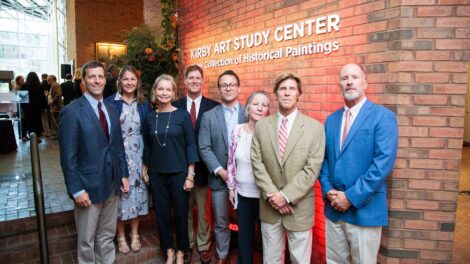Celebrating a century of civil rights impact
By Jill Spotz
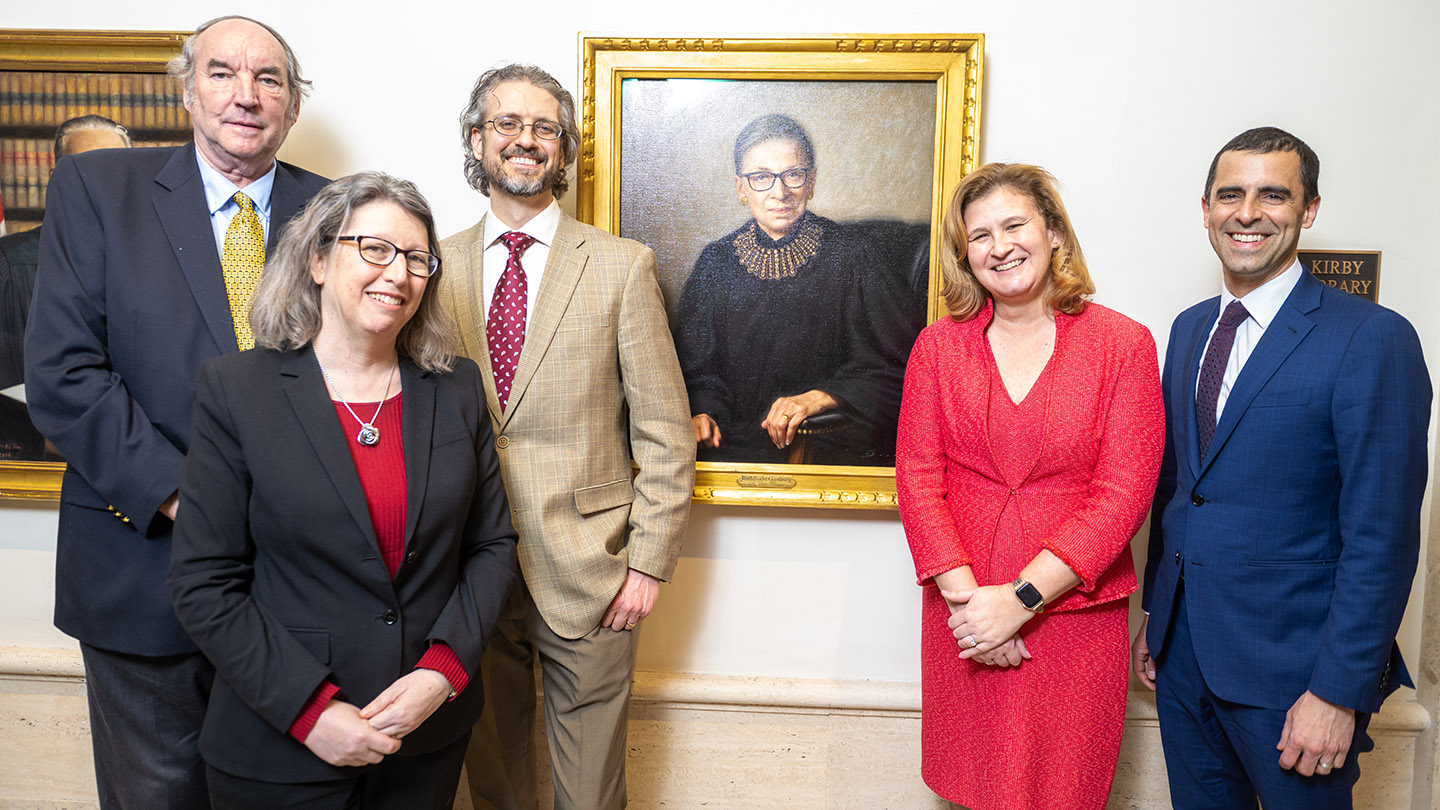
From left: Bruce Allen Murphy, Kirby Professor of Civil Rights; Margo J. Schlanger, Wade H. and Dores M. McCree Collegiate Professor of Law and director, Civil Rights Litigation Clearinghouse, University of Michigan Law School; Joseph Q. Daily, portrait artist; Nicole Hurd, Lafayette president; and Justin Kiczek, F. M. Kirby Foundation executive director, stand near the portrait of Ruth Bader Ginsburg in Kirby Hall of Civil Rights.
There is a recognizable face watching over students and professors who pass through the second-floor hall of Kirby Hall of Civil Rights these days. A 32-by-26-inch, oil-on-canvas painting of Ruth Bader Ginsburg, who served as associate justice of the United States Supreme Court from 1993 through her death in 2020, is now on display just outside Kirby Library. The painting is the newest addition to the Kirby Collection of Historical Paintings. Lafayette College celebrated the 100th anniversary of the establishment of the Fred Morgan Kirby Professorship of Civil Rights with the dedication of the portrait of the late Justice Ginsburg as well as a reception and lecture on March 22.
“Today, we add to this incredibly special collection with the portrait of the Honorable Ruth Bader Ginsburg,” said President Nicole Hurd during the dedication. “She’s admired, loved, a champion, a pioneer, a voice, and an advocate. She was and she always will be an icon. And so she’s absolutely the right person to be in the space because this is a space of firsts. For those of you who know this, this is our first building created for civil rights. Later tonight, we’re going to celebrate Professor [Bruce] Murphy and the first endowed professorship in civil rights.”
While the portrait of Chief Justice John Jay that hangs in Kirby Library was one of the first gifts presented by Allan P. Kirby, Class of 1915, in 1943, the painting of Justice Ginsburg is the second commissioned portrait of a Supreme Court justice to be displayed in Kirby Hall of Civil Rights. In 2016, a painting of Associate Justice Thurgood Marshall, the first African American to serve on the Supreme Court, was commissioned from artist Ying-He Liu and dedicated to honor the universal struggle for civil rights. Both the Marshall and Ginsburg portraits were commissioned through support provided by the F.M. Kirby Foundation Inc.

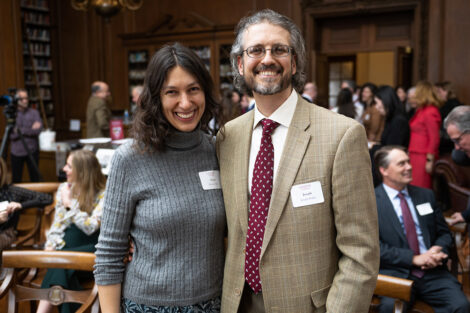
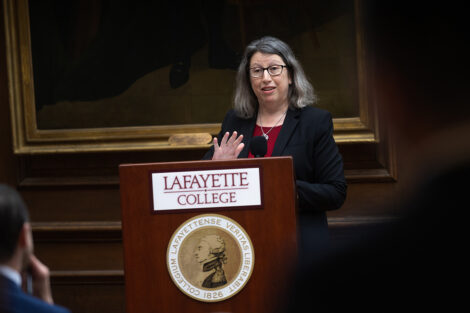
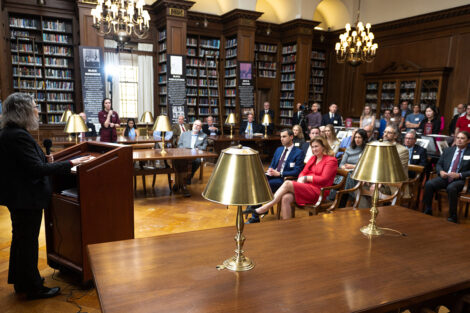
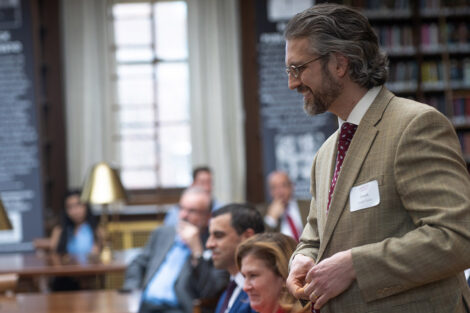
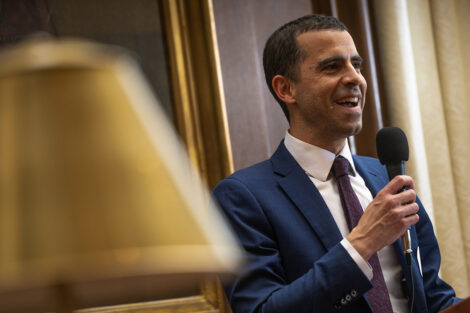
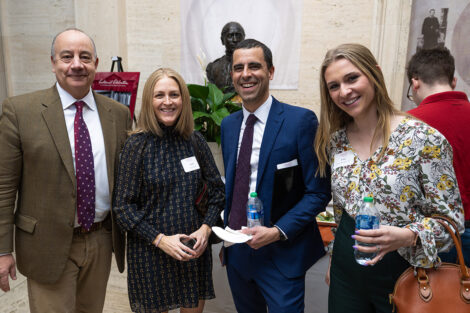

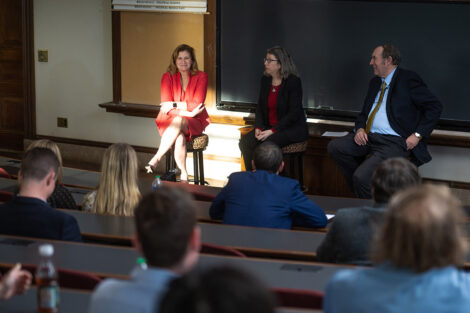
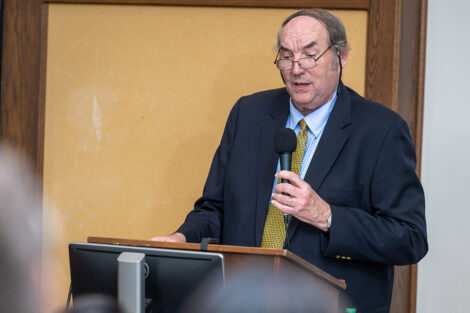
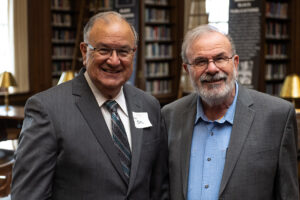
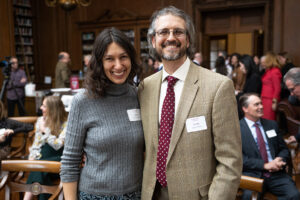
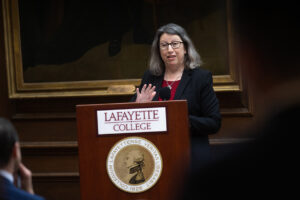

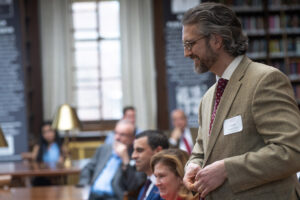

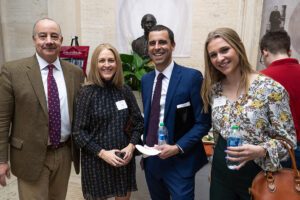
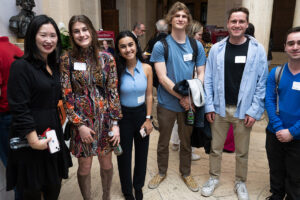
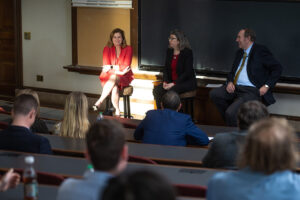

Justice Ginsburg is depicted in a traditional black judicial robe and wearing her famous dissent collar. As the second woman to serve on the Supreme Court, Ginsburg was known for her collection of collars made from a variety of materials, including lace, beads, jewels, and even shells. Ginsburg’s collars became synonymous with her style and often served as statements connected to her work.
The portrait of the late Justice Ginsburg was commissioned in 2020 in connection with the 100th anniversary of the establishment of the Kirby Professorship (1920) but plans were delayed due to the pandemic. Sadly, during that time Justice Ginsburg passed away. The artist, Joseph Q. Daily, also spoke at the event about the complex process of painting a posthumous portrait.
“I was extremely excited and thought I would be able to have my normal portrait procedure—I thought I’d get to meet her and have a sitting,” explained Daily. “And then Justice Ginsburg passed on about three weeks later. Immediately, it became quite a different kind of portrait. So, you know, from an artist’s perspective, a posthumous portrait is always quite an adventure, and this was no different. Luckily, Ruth Bader Ginsburg was such a high-profile figure that I felt like I did have some conception or impression of her character, but still, you need reference to work from to make the painting.”
Bruce Allen Murphy, Fred Morgan Kirby Professor of Civil Rights, played a key role in the process, including selecting Ginsburg’s dissenting collar for her portrait, which Daily agrees “fits really well symbolically but also visually.” Murphy serves as Lafayette’s fifth Kirby Professor of Civil Rights. He also was instrumental in facilitating the portrait of Thurgood Marshall in 2016.
Since establishment of the Kirby Professorship in 1920, only five individuals have held the position. Posters of the former Kirby chairs were displayed throughout Kirby Hall of Civil Rights during the event, including: Miller D. Steever, Class of 1909, Fred Morgan Kirby Professor of Civil Rights (1921-52); Eugene P. Chase, Fred Morgan Kirby Professor of Civil Rights (1952-63); Robert P. Kelson, Fred Morgan Kirby Professor of Civil Rights (1964-76); Lawrence W. Beer, Fred Morgan Kirby Professor of Civil Rights (1982-97); and Murphy, who has held the position since 1998. In addition to supporting the Kirby Professorship, the endowment, which is Lafayette’s single largest endowment, supports all faculty positions in the Government and Law Department and approximately half of the faculty positions in the Economics Department.
“It is an honor to be part of the 100-year legacy of scholars who have held the Fred Morgan Kirby Professorship of Civil Rights, and to teach about American constitutional law and politics in the magnificent Kirby Hall,” explained Murphy. “My predecessors set a high benchmark, and in my 25 years in this position, I have done my very best to live up to those lofty standards. It is truly a pleasure to work with so many generations of outstanding Lafayette students, and it has been my privilege to work with such accomplished colleagues.”
Margo J. Schlanger, Wade H. and Dores M. McCree Collegiate Professor of Law and director, Civil Rights Litigation Clearinghouse, University of Michigan Law School, also spoke at the dedication and at a lecture that evening. Schlanger had the good fortune of serving as a clerk for Justice Ginsburg in 1993-95 during her first two years on the Supreme Court. Schlanger spoke about the many contributions to American law that were made possible by Ginsburg’s hard work, including two in particular that moved constitutional law to recognize women as equals.
“As the founder of the ACLU Women’s Rights Project and the nation’s leading feminist litigator, she insisted simultaneously that the world could not tell women what kind of woman to be,” said Schlanger during the dedication. “And that is really important that each woman should get to decide for herself, and each man too, what that status, what that role meant for her or him, and that the state should not be in the business of telling them how to do that. At the same time, she insisted that the state should value the way women are. And that’s also really important.”
Following the portrait dedication and reception, President Hurd led a discussion with Murphy and Schlanger where they touched on topics ranging from their decisions to pursue teaching, the importance of law reform, and the significance of equality.
When asked, “What advice would you give students today as citizens of the world?,” Schlanger’s response provided a terrific connector between the celebration of the Kirby Professorship of Civil Rights and dedication of the portrait of Ruth Bader Ginsburg: “Equality, equality, equality. That’s the message; just remember it,” explained Schlanger. “You all have gone to this terrific college, and you’re going to graduate with a terrific education, and hopefully you will have terrific lives, and that doesn’t make you more important than people who didn’t do that. It just makes you luckier.”
